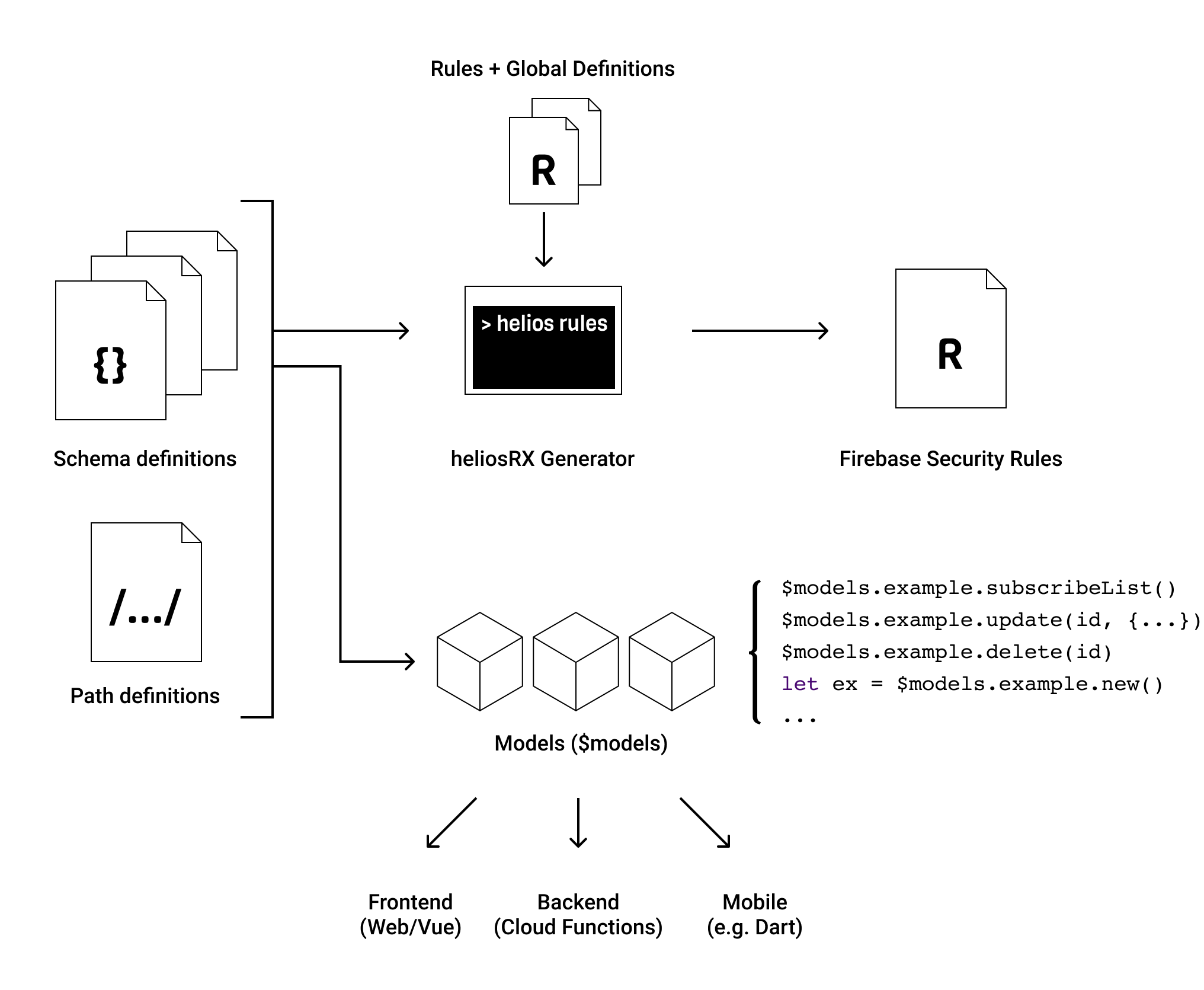# Introduction
# What is heliosRX?
heliosRX is a front-end ORM (Object-Relational Mapping) layer
for reactive real-time web applications using Firebase Realtime Database.
heliosRX allows developers to define models based on schema files.
While using the Firebase Client API is fine for smaller applications, enforcing some structure is almost necessary to successfully manage more complex applications. Enforcing structure simplifies life a lot and gives you the best of both the NoSQL and the SQL world.

heliosRX consists of two parts: A generator that can generate security rules from schema files, thus creating a data model for the server, and a javascript ORM library, that creates a nice abstraction to Realtime Database based on the exact same data model. The basic idea here is: Describe a model once, reuse it as much as possible. Another goal of heliosRX is therefor to target different platforms with a shared codebase and provide a unified API to the database for different platforms, such as:
- Babel for Web / Desktop
- Node for admin tools and cloud functions
- Dart / Flutter for Mobile (planend)
While currently heliosRX is build for Vue and Firebase Realtime Database, other backend integrations might get implemented in the future (e.g. GraphQL).
# When should I use heliosRX?
If you're using Firebase as your backend and if you're building a SPA that is a little bit more complex than a simple to-do list, then heliosRX is probably very useful for you. Some reasons you might chose heliosRX over just the Firebase Client API are:
- ➡️ You want to develop a SPA with Vue and Firebase
- ➡️ You want to write significantly less code
- ➡️ You want to automatically generate Security Rules based on schema definitions
- ➡️ You want consistent data validation on client and server
- ➡️ You want an additional layer of abstraction and therfore less vendor lock-in
- ➡️ You want automatic type conversion for timestamps
- ➡️ You want object oriented state management - No
Vuexneeded (although heliosRX currently uses Vuex internally, which will probably change with Vue 3)
If that makes sense to you, you should give heliosRX a try.
# How it works
To understand how heliosRX works, have a look following picture. Basically the database is specified by (1) model definition files, that describe which fields can be stored and (2) a path definition file, that describes where data is stored.

heliosRX uses the bolt language and the bolt compiler. The model definitions can then be used to create bolt files, which are merged and then compiled to Firebase security rules.
Also heliosRX generates an API that can be used to access the database in a straight
forward way. Based on the model definition, model instances can be created from
existing or new data. Under the hood heliosRX creates a new Vue instance within
each model instance. These intances manage state and reactivity, so you probably
don't need an additional state management.
